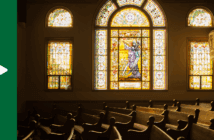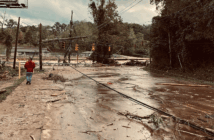Luke Edwards says we can explore our communities with the same spiritual practices that deepen our understanding of God’s Word. He has adapted the practice of Lectio Divina as a tool for “reading” the neighborhood surrounding a church in a new, more prayerful way.
What if church leaders learned to read their community like they read Holy Scriptures? The practice of Lectio Divina is designed to deepen our understanding of God’s Word. Applying the same process to exploring the community can help a congregation listen deeply to its neighborhood and relate to the community in a new way.
Follow these steps as you walk through a neighborhood or drive through a rural community. Each member of your team should undertake this practice individually and then compare experiences.
1. Prepare (Silencio)
As you prepare to depart, quiet your inner voice. Invite the Holy Spirit to guide your steps and your observations. Seek a mindset of openness, leaving preconceived assumptions behind.
2. Read (Lectio)
As you begin walking, take special notice of whatever and whomever you see. In this stage try to avoid interpreting what you see; simply observe. You may make notes on paper or on your phone if it helps you to remember. Take note of places where people are gathering. Look for written words on signs, posters, or magazines. Observe the housing in the community. If a property is for sale or rent, look up the cost. What stands out to you right away? Remember you are not interpreting yet.
3. Meditate (Meditatio)
Find a quiet place to sit in the neighborhood. Reflect upon what you saw. Replay the walk in your imagination, stopping for moments that stood out to you. Ruminate on these moments. What stood out to you about them? Slowly shift your focus from the mind to the heart. What feelings were stirred in you? What was happening under the surface? Where did you feel God’s presence on your walk? Where could you see God already working?
4. Pray (Oratio)
Shift into a conversation with God about what you saw on your walk. You can do this in a journal if it helps. Ask God some questions. Ask God for clarity in areas that are unclear. Ask where you might partner with God’s redemptive work already happening in the community.
5. Contemplate (Contemplatio)
As you begin to close, jot down your newly discovered insights about your neighborhood. Write down anything you feel that God was saying to you in this time. Rest in God’s presence for a few moments before returning to your daily tasks.
This approach to “neighborhood reading” (Lectio Vicinitas) can open your eyes to seeing your community as God sees it.
A PDF version of Lectio Vicinitas is available for download at Luke’s blog “A Way in the Wilderness.”
Related Resources
- 4 Key Practices of Community Engagement by Doug Powe And Sam Marullo
- 7 Steps to Reengage Your Community by Candace M. Lewis And Rodney Smothers
- 5 Key Practices for Connecting with Your Context by Mark Gornik And Maria Liu Wong






